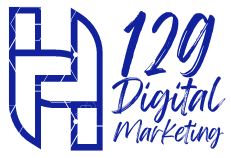
SEO is divided in On-page (on your website) and Off page (other websites)
Some common on-page SEO techniques included: Using descriptive, keyword-rich titles and headings
Writing unique and informative page content
Using alt text to describe images
Creating a clear hierarchy of headings (H1, H2, H3, etc.)
Optimizing the website’s meta tags, such as the title tag and meta description
Using clean and logical URLs
Ensuring the website is mobile-friendly and has a fast-loading speed
Implementing structured data (such as schema markup) to help search engines understand the content on the page
By perfecting your on-page SEO, you can improve the relevance and user experience of your website, which can lead to higher rankings in search engine results pages (SERPs). It is important to note that on-page SEO is just one aspect of a comprehensive SEO strategy and should be paired with off-page SEO techniques in order to achieve the best results.
Use descriptive, keyword-rich titles and headings: This helps search engines understand the content on the page and can improve the relevance of your website for specific search queries.
Title tags: Title tags are the most important on-page SEO element. They should include the primary keyword for the page and written in a way that is both user-friendly and search engine friendly.
Meta descriptions: Meta descriptions are short summaries of the content on a page. They should include the primary keyword and written in a way that is both user-friendly and search engine friendly.
Headings: Headings to structure the content on a page. They should include the primary keyword and written in a way that is both user-friendly and search engine friendly.
Image optimization: Images should be perfected with the primary keyword in the file name, alt text, and caption.
Internal links: Internal links should use to link related content on the same website.
External links: External links should use to link to relevant content on other websites.
URL structure: URLs should be short, descriptive, and include the primary keyword.
Content optimization: Content should be perfected with the primary keyword and related keywords. It should also be written in a way that is both user-friendly and search engine friendly.
Write unique and informative page content: Google values high-quality, informative content and will rank pages higher in search results if they provide value to users.
Use alt text to describe images: Alt text is used to describe the content of an image to search engines, which can improve the visibility of your website for image search results.
Create a clear hierarchy of headings (H1, H2, H3, etc.) This helps search engines understand the structure of your content and can improve the relevance of your website for specific search queries.
Optimize the website’s meta tags, such as the title tag and meta description: The title tag and meta description are used to display a summary of the page in search results. By perfecting these tags, you can improve the visibility and click-through rate of your website in search results.
Use clean and logical URLs: URLs that are easy to read and understand can improve the user experience of your website and may be given a higher ranking in search results.
Ensure the website is mobile-friendly and has a fast-loading speed: These factors can improve the user experience of your website and may be used as ranking signals by search engines.
Implement structured data (such as schema markup): This can help search engines understand the content on your page and may be used to display rich snippets in search results.
Use internal linking to help search engines discover more of your website’s content: Internal linking can help search engines understand the structure and hierarchy of your website’s content and may be used to influence the ranking of your pages.
Use descriptive file names for images and other media: This can help search engines understand the content of the media on your website and may improve the visibility of your website for image search results.
Use keyword-rich anchor text for external links: This can help search engines understand the context of the linked page and may improve the relevance of your website for specific search queries.
Use social media tags, such as Twitter Cards and Open Graph tags, to improve the visibility of your website on social media platforms: These tags can help your website’s content be displayed more prominently on social media platforms and may improve the visibility of your website in search results.
Use header tags (H1, H2, H3, etc) to structure your content and make it easier for users and search engines to understand: Header tags help to create a hierarchy of importance for the content on your page, which can improve the relevance of your website for specific search queries.
Use keyword-rich alt text for images: Alt text is used to describe the content of an image to search engines, which can improve the visibility of your website for image search results.
Use keyword-rich titles for videos and other media: This can help search engines understand the content of the media on your website and may improve the visibility of your website in search results.
Use meta descriptions to summarize the content of your page: Meta descriptions are used to display a summary of the page in search results and can improve the click-through rate of your website.
Use keyword-rich captions for images and other media: Captions can help search engines understand the content of the media on your website and may

129 Digital Marketing – Copyright © 2024 All Rights Reserved.
Privacy & Cookie Policy
WhatsApp us